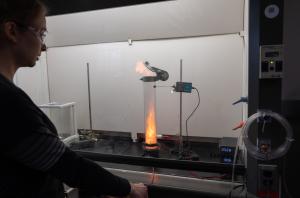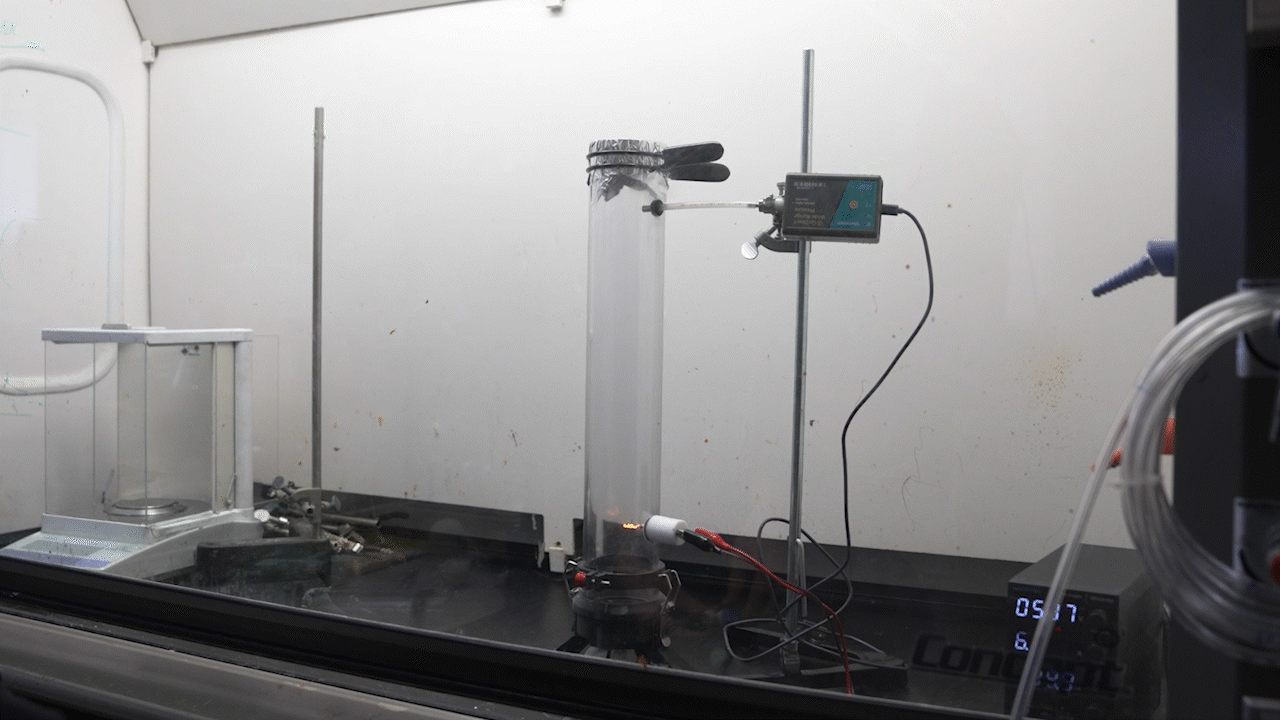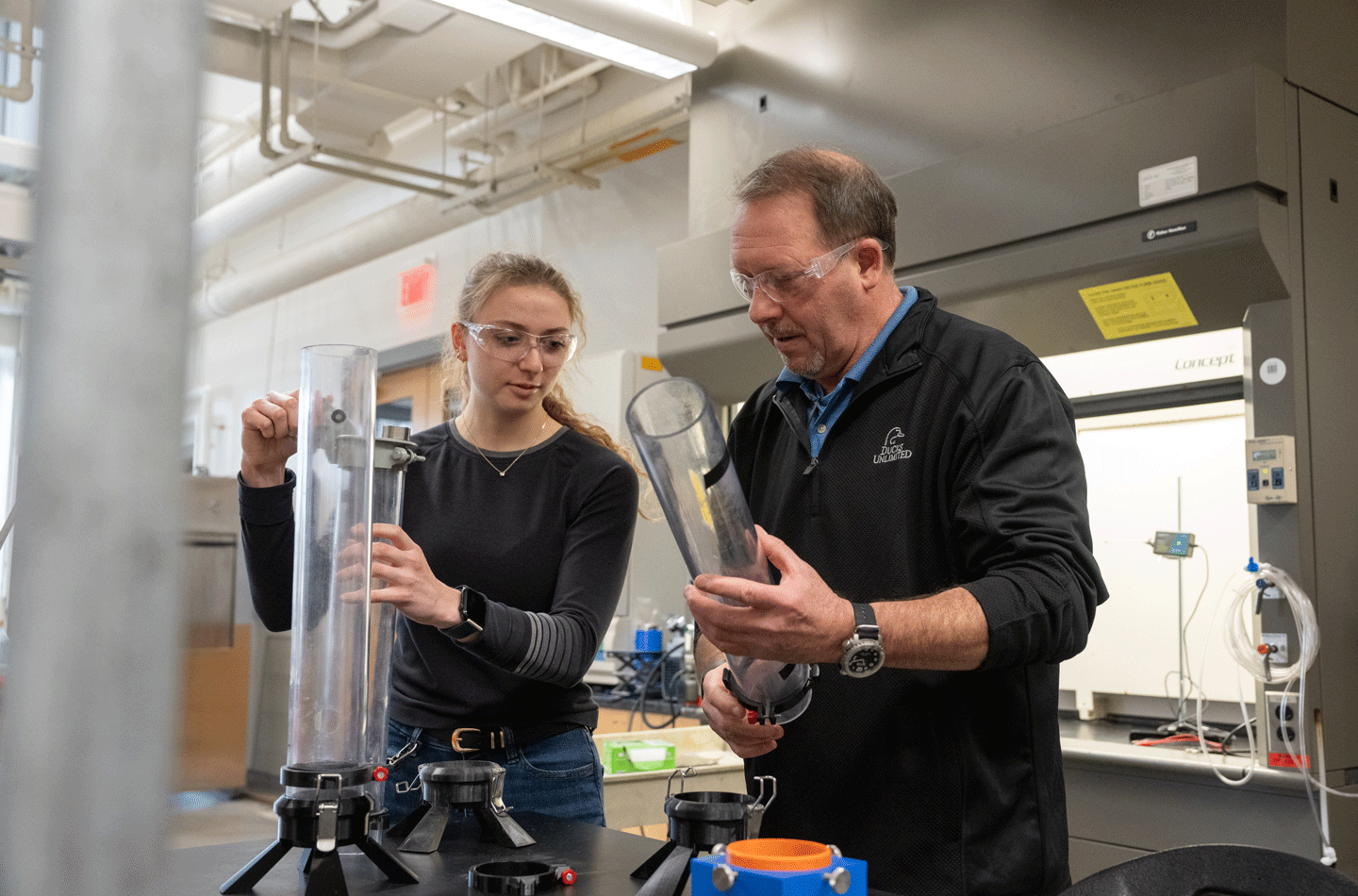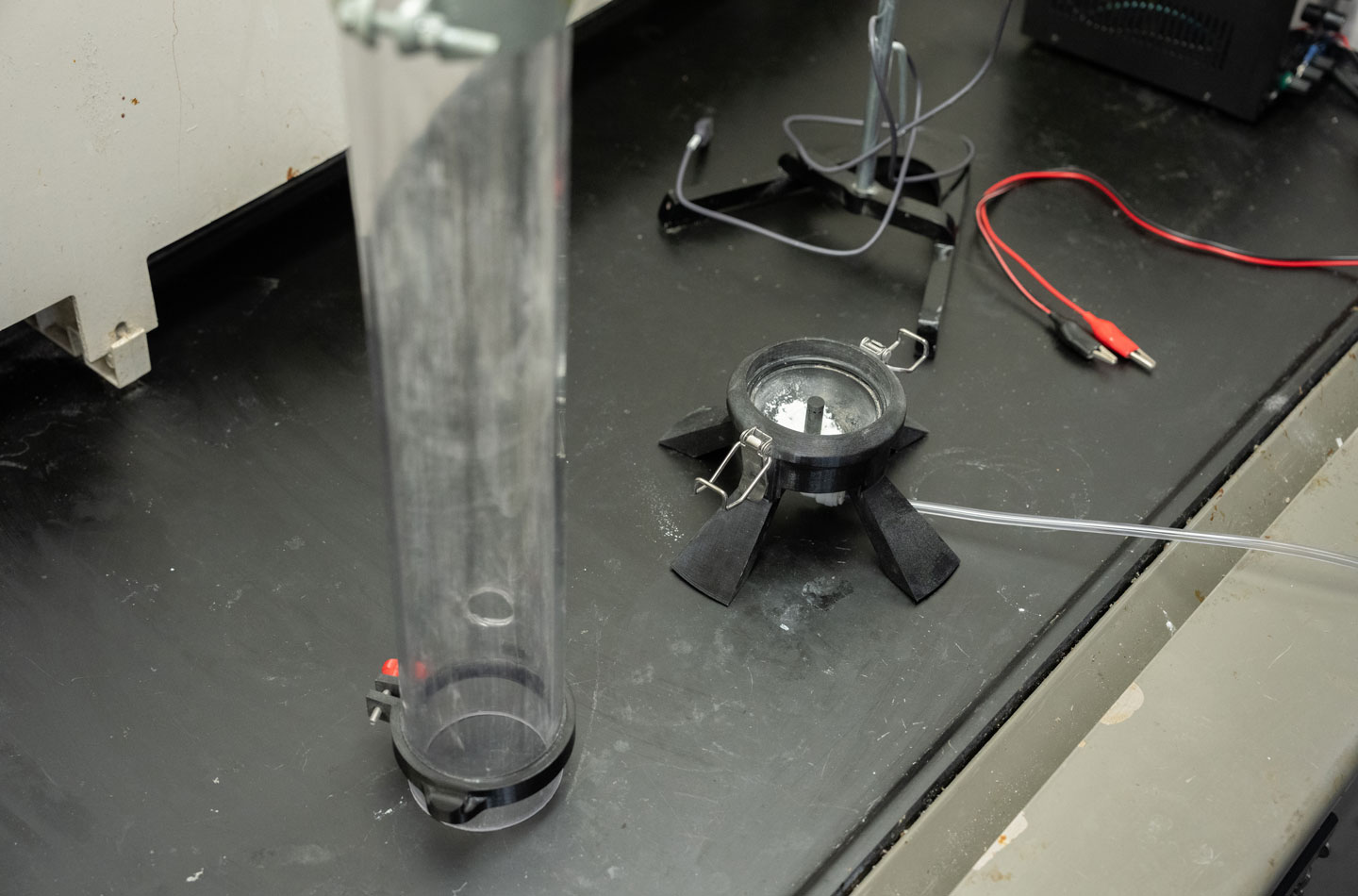
With a rush of piped-in air, the little pile of powdered coffee creamer lifted into a miniature dust cloud inside a clear tube where an electrode glowed red-hot. In a split second, the dust flared and then exploded, blowing open the tube’s lid.
The 1/8-inch-thick polycarbonate tube, behind a shield for good measure, safely contained the blast. The scent of caramelized sugar from the burned creamer wafted through the lab, prompting passersby to wonder aloud who was making crème brûlée.
For teaching engineers in training to avoid catastrophic workplace accidents, this dust explosion tube does the job.
Vanessa Campbell, a fourth-year University of Virginia student, was testing the Department of Chemical Engineering’s adaptation of the Hartmann tube. Commercial versions have long been used in industry to test the explosibility of airborne dust, a common manufacturing hazard — but those can cost tens of thousands of dollars.
UVA’s cost is less than $700.
“Our design focuses on being affordable and functional for educational use,” said Campbell, who designed UVA’s latest “Affordable Hartmann Tube” prototype.
It uses standard lab equipment, and is made of inexpensive, readily available parts — like a $12 tractor exhaust lid. The base and some other components are 3D-printed.
But why do any of this? Because simulating conditions that lead to industrial tragedies — like a 2008 dust fire and explosion at the Imperial Sugar Company in Georgia that killed 14 workers — in undergraduate labs is complicated and expensive.

“Our tube solves a considerable problem common to chemical engineering laboratories,” said associate professor George Prpich. “Namely, how do we demonstrate abstract concepts of process safety in a lab setting? How do we do it safely, and economically? Our solution addresses all three issues.”
Beginning next spring, students in Prpich’s Chemical Engineering Lab will be the first to use the tube for hands-on experiments. As an undergraduate teaching assistant, Campbell will instruct them using detailed protocols she is writing for safe, consistent results.
What is ‘Process Safety’?
“In industry, the key to process safety is recognizing that a hazard is there in the first place,” said teaching professor and retired BP executive Ron Unnerstall, who co-advised the Hartmann tube project with Prpich.
When Unnerstall came to UVA five years ago, he had just left an oil and gas industry striving toward zero tolerance for safety failures. It did so in the wake of disasters like the deadly 2010 Deepwater Horizon drilling platform explosion and oil spill in the Gulf of Mexico.
“People will make mistakes,” Unnerstall said. “Whether a mistake translates into an accident depends on the practices, behaviors and the processes we put in place to manage the risks. The protocols Vanessa has built around the tube are those practices that students will apply on their own.”
They will realize that these lessons are relevant outside the workplace, too, he added: “They’re going to look at a lawnmower or a weed whacker a whole lot differently after this experience.”
Whether a mistake translates into an accident depends on the practices, behaviors and the processes we put in place to manage the risks.
In 2020, Unnerstall developed an elective course in process safety, at a time when only a handful of engineering schools were offering the class. It was and continues to be funded by donations from UVA nuclear engineering alumnus F. Gregory Hudson, whose industry experience also left him with a keen interest in safety systems. Hudson also is funding the tube project.
The new class was part of an expansion of the department’s already strong safety programs to continuously ingrain safety awareness and knowledge in students and faculty until it becomes second nature.
Process safety has since been integrated into other courses, including Prpich’s labs, along with weaving general awareness throughout the undergraduate and graduate curricula and lab protocols.
“The Hartmann tube project is part of that effort,” said Prpich, who has published and presented to peers on the department’s culture-building approach.
“The exercise aligns with the perceptions and behaviors that we’ve been cultivating,” he said. “Being hands-on allows students to put their knowledge into practice in the lab, providing context and completing the learning loop.”

Improving the Design
Campbell took over the project from Clare Cocker and Mara Pettit, who built a working prototype before graduating last May.
Among her improvements, she redesigned the base with quick-release clips — the kind used for glass jars — to hold the tube in place. The clips and a revamped screw-in ignition system were ingenious time-savers born of necessity as she ran test after test.
“To make the tube run reliably and design experiments for students to use in class, I needed a high volume of data. It required rapid turnaround and I was just honestly getting fed up with how long the old system took,” Campbell said.
Now the whole thing comes apart for cleaning and reassembles in minutes, ready for the next run.
“Vanessa has really elevated the project’s outcome, and she has enriched our own understanding of the design process,” Prpich said.
Beyond UVA
Campbell has presented a poster on the project and she is writing a paper to publish next year to share her journey with other chemical engineering programs.
“It’s a great teaching tool,” she said. “Clare and Mara along with Professors Unnerstall and Prpich brought the project to life, but I am excited to finish it and see if it can help others.”

Publication Information
"Translating Industrial Lab Safety Practices to Academia" was co-authored by professors George Prpich and Ron Unnerstall from the University of Virginia. It is published in CEP Magazine, a publication of the American Institute of Chemical Engineers.